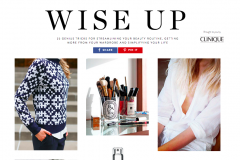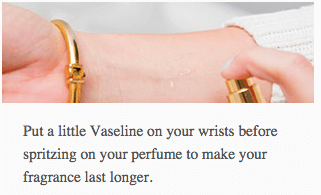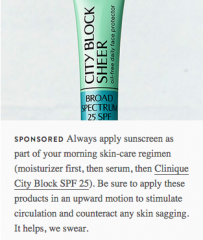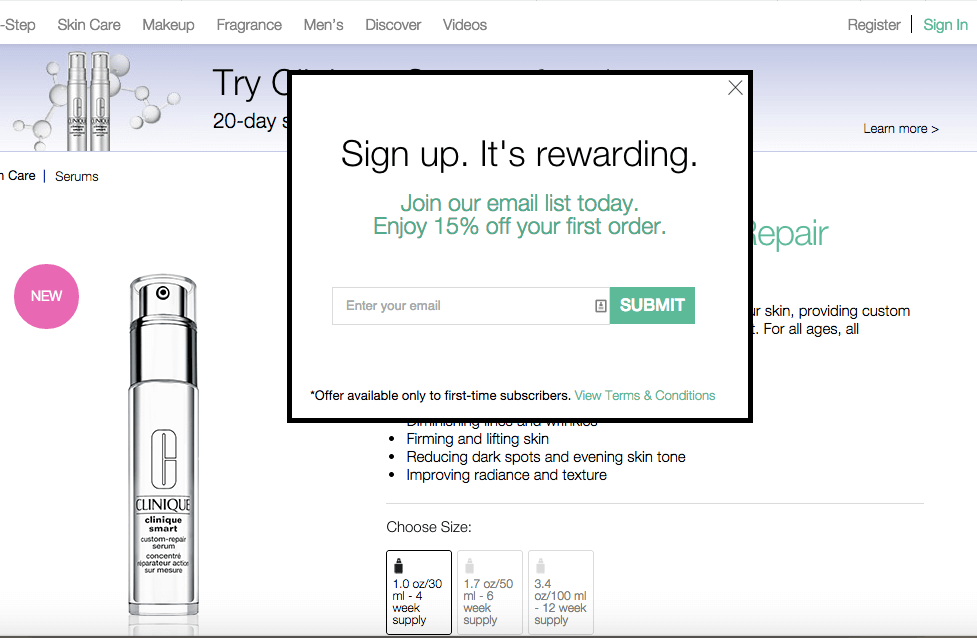
By Laura Petrolino
At the end of 2013, Gini Dietrich listed sponsored content as one of the top four content marketing trends to watch for in 2014. Sure enough we’ve seen it slowly, but surely, creep its way across the digital landscape in the last year.
Some brands are using it well and some not so well (I’m being polite.)
But the biggest learning curve for the sponsored content movement seems to be implementation with a clear strategy to make sure it provides return-on-investment (ROI). This is a missing piece even for some of the brands placing clever and non-intrusive content.
Clinique and PureWow
The other day I received an email from PureWow, “a digital publication dedicated to finding ways to make your life more interesting, beautiful and manageable.” I’m not sure if they do that, but they do provide a pretty smart example of a well-run brand journalism operation and I often get inspiration or ideas from how they go about things.
This email was to announce a new featured they partnered with Clinique to produce, “Wise-Up: 25 Genius Fitness and Beauty Hacks.”
The email starts
Some mornings, everything just falls into place. You wake up well rested, have time to do your hair and makeup, and even manage to slip into a fabulous ensemble before leaving the house. Wouldn’t it be great to feel your pulled together best more often?
And with the same signature “coffee with your best friend” voice Pure Wow uses consistently well through all their communications, they launch into a brief discussion about the very visual compilation of beauty and fashion hacks they (along with your other “coffee buddy,” Clinique) have developed.
Sponsored Content Using the Four Media Types
When you arrive at the page you notice there are four things about it: It’s highly visual, it’s easily consumable, it’s built for sharing, and it’s educational.
It’s Highly Visual
In fact, beautifully visual. It is laid out like a Pinterest page and, until you start scrolling over the different photos, it is void of all text. Thus, it engages the reader strongly with it’s visual appeal immediately.
Visual content is particularly effective for a post like this. Not only is it extremely well targeted for the subject matter (when it comes to fashion and beauty “seeing” vs. “describing” just makes more sense,) but it also has be shown to increase sharing, engagement, and better influence-desired visitor actions.
A win for any content, sponsored not excluded, and particular good in focusing in on ROI.
It’s Easily Consumable
This isn’t a piece that requires a lot of brainpower.
A small piece of content appears when you scroll over each image, never longer than a sentence.
Some include internal links for further information (not to mention pulling the visitor deeper into the site,) but many just give a quick tip in the sentence alone.
It’s Built for Sharing
Normally when we discuss “sharable” content, we are only referring to its propensity for being shared online.
While that’s important for something like this, it is also important to understand this content is highly sharable through mere word-of-mouth, as well.
Friend-to-friend, sharing little tips they heard along the way. And when that happens the article–and Clinique–is re-triggered in the buyer’s mind.
Although hard to track, it’s important to note.
Forrester says the web will account for or influence 59 percent of retail sales by 2018, it is this type of integration of both on- and offline influence which will make that number a reality.
It’s Educational, not Sales-y
In fact there are only two links of Clinique products. Both include a quick tip and a link to a product associated with the tip (also notice how they maintain consistency with the “coffee with a friend” voice in the call-to-action.)
Sponsored Content for Lead Generation
As the old e-commerce saying goes, “a click, a purchase does not make,” (actually I just made that up, but I channeled my inner retail Yoda for it).
So while this content might be shared, liked, and even drive traffic to the Clinique product pages, the bottom line is return on investment through leads and sales.
This campaign has done an excellent job in encouraging that, as well.
Once you transition over to the Clinique site, there are a few clear calls-to-action (CTA) which grab you immediately:
- The product.
- A top bar CTA to try “Clinique Smart” for free.
- Another CTA for free shipping on a $50+ purchase (one of the sponsored products is $59 and one is $23, but you better believe very few people leave that site with less than $50–I’d love to see those metrics.)
- And finally, a pop-up for 15 percent off your first order when you sign up for their email list.
Being that you are already most likely a highly qualified lead—having come over to the site through the PureWow content—the chance you leave without either providing them a sale or becoming a lead through their email list is probably fairly low (again, I’d LOVE to see those metrics.)
They have you….quite masterfully.
Sponsored Content Requires Strategy
As you can see, like any communications tactic, to be successful sponsored content require strategy–a strategy that integrates all four media types.
Clinique and PureWow provide an excellent example of doing this right.
What other great examples of sponsored content have you seen?




